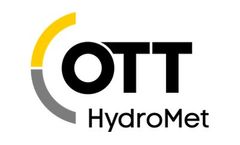Wind Turbine Emulator With Armature Controlled Articles & Analysis
7 articles found
Higher, more robust, more reliable: Parallel to the growing requirements for wind turbines, the requirements for monitoring sensors grow as well. But how can wind sensor manufacturers fulfil these wishes? And how should a future wind sensors look like? After analysing the current conditions and trends on the wind energy market, our CEO Klaus Hirzel compiled a wish list for future wind sensors. ...
Each day, there occur about 1,000 thunderstorms with 4-10 million lightning bolts worldwide. In average, 700 people per year are hit by such light discharges, of which 75% of the hits result in long-term damages. Between three and seven cases end fatal. The risk is particularly high in the open field and is fortunately decreasing. The reason for this is that we stay more often inside in cars and ...
In this paper, data–driven system modelling, control, and fault detection technique for wind turbine systems are researched. The developed algorithm is to recursively update system parameters using predictor–based system identification (SID) technique. Updated system parameters are used to design subspace predictive controller for wind turbine systems with constraint on pitch angle and generator ...
In this paper, a small wind turbine emulator (WTE) using separately excited DC motor is modelled, designed, simulated, implemented and tested. A 1 HP separately excited DC motor is used to emulate the characteristics of the rotor of small wind turbine. The DC motor is driven by a thyristor bridge ...
The efficiency of the wind power conversions systems can be greatly improved using an appropriate control algorithm. In this work, a robust control for variable speed wind power generation that incorporates a doubly feed induction generator is described. The electrical systems incorporate a wound rotor induction machine with back–to–back three phase power converter bridges between its rotor and ...
Isolated wind farms employ simple squirrel cage induction generators driven by variable speed wind turbines. Lacking control capability, such generation can contribute very little to network support. Wind turbines mostly do not take part in voltage and frequency control and if a disturbance occurs, the turbines may be disconnected and reconnected when normal operation has been resumed. From ...
In this paper, optimal control of new wind energy conversion scheme where four-leg improved matrix converter (MC) is used for performance and stability enhancement, particularly for sites where most of the time low wind speeds prevails, has been explained. The power factor at the interface with the grid is controlled by the MC to ensure purely active power injection into the grid for optimal ...


